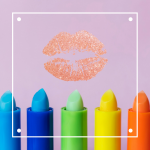I had the pleasure this week of attending Chico State’s Annual Drag Show. I did theatre growing up, and swear I could feel the show’s energy from a mile away. I’d never been to a drag show, and wasn’t really sure what to expect. I felt a combination of nervous, excited, and curious.
“If you have ever caught a moment alone in your kitchen, blared your most favorite song, and danced and sung like it was the only job you’d ever have, that is what witnessing drag was to me.”
This vulnerability, this sexual energy we usually keep to ourselves and performances we usually only reserve one seat for (ourselves), was so entirely out in the open for these performers.
It was one of the most exhilarating and beautiful things I have seen in a very long time.
My throat is sore from yelling, but my heart is warm. So let’s learn a little bit about drag, shall we?
A Brief History of Drag
The term “drag” was created by none other than Shakespeare. Although he first used the word to describe any performance involving cross-dressing, I believe the word carries much more meaning now. Especially for the performers.
Cross-dressing was more of a form of comedy in olden theater. To see a man adorning the accessories of a woman would send an audience howling.
It wasn’t until the 1920s to 1930s that the LGBTQ+ community began to reshape exactly what drag was.
“Gay Bars” sprouted up, and so did drag performances. This time however, as an act of empowerment as well as an act of entertainment in theatre.
The 1950s through the 1960s caused drag performers to create “Drag Balls.” These served as a safe space to perform after it became socially acceptable for police officers to arrest people not wearing at least three items of clothing from their assigned gender.
These balls were rather like a fraternity in workings, and had a drag “Mother” to lead the home.
By the 1980s drag was hot, mainstream, and widely accepted. Queens and Kings would guest star on talk shows, and even movies.
Why is Drag so Important?
In the most gorgeous and entertaining outlet ever, drag asks us as audience members to criticize what we believe gender to be, and how certain genders should look, think and act.
It is important to note that male performers dressed in drag as a woman are not synonymous with a transgender person.
Drag performers have all sorts of diverse identities. I saw performers who identified as female dressed as a female in billowing gowns, males who identify as males dressed as women, males who identify as males dressed as males, and performers who identify as neither dressed as men and women.
To be a drag king or queen does not mean you must dress “opposite” to the gender you identify as. The same way it does not mean you must not. In many cases, a performer may not even see their gender as something that can be defined and have an clear other-side-of-the-circle opposite.
Drag blends, it exaggerates, it leaves sparkles upon any form of questioning of what exactly gender is.
Drag is fun. It is exhilarating and such an important form of theater for people of all genders and sexualities to watch.
If you live in Chico and are over 21, I encourage you to attend a drag show at Maltese Bar.
Until then, we could all take note from drag kings and queens and step up our confidence in who we are. Who else does confidence and vulnerability better than drag performers? No one.


2 comments for “The Kings and Queens of Vulnerability”